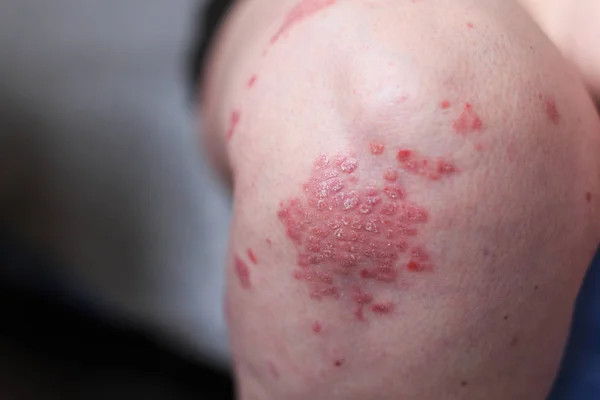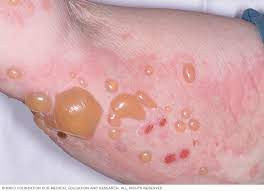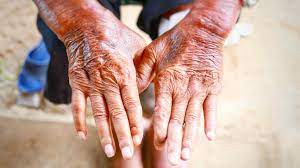Definition
Neuromyelitis optica (NMO) is a central nervous system disorder affecting the optic nerves (optic neuritis) and the spinal cord (myelitis). Also known as Devic's disease, NMO is classified as an autoimmune condition, where the immune system mistakenly attacks the body's tissues, specifically the optic nerves and spinal cord. This nervous system disorder can result in blindness and paralysis.
Causes
NMO is an autoimmune disorder wherein the immune system abnormally targets healthy tissues, particularly the optic nerves and spinal cord nerves. While NMO generally is not inherited by the offspring, patients may have a familial history of autoimmune diseases or concurrent autoimmune conditions.
In NMO, the immune system attacks the myelin sheath covering the axons (nerve fibers). The myelin sheath facilitates the rapid transmission of electrical signals to the nerves and provides nourishment to them. The most commonly affected myelin is in the optic nerves and spinal cord. Individuals with NMO may experience relapses every few months or years, with potential recovery periods in between relapses.
Risk factor
Several factors can elevate an individual's risk of developing neuromyelitis optica, including:
- Children or adults in their 40s.
- Female gender.
- Family history of autoimmune diseases, such as:
- Systemic lupus erythematosus
- Rheumatoid arthritis
- Vitiligo (characterized by skin patches that have lost their original color)
- Psoriasis
- Smoking habits.
- Inadequate consumption of dairy products, seafood, eggs, vegetables, and fruits.
- History of infections such as:
- Chickenpox
- Tuberculosis
- Dengue virus
- Cytomegalovirus (CMV)
- Herpes simplex virus
- Zika virus
Symptoms
Types of NMO
There are two types of NMO based on recurrence patterns:
- Relapsing type, characterized by periodic recurrences with recovery between episodes. This type is more common, with women being at higher risk than men.
- Monophasic type, involves a single attack lasting several months, with equal prevalence in both men and women.
Individuals with NMO should be really careful when driving due to potential visual nerve damage that can occur. Consultation with a doctor and the police is recommended regarding conditions that might impair driving ability.
Signs and symptoms
Symptoms of NMO can vary in severity from mild to severe and may include:
- Eye pain.
- Loss of vision or blindness.
- Colors appearing pale or dull.
- Weakness in the hands and feet.
- Sharp, burning, stabbing, or numb pain in the hands and feet.
- Increased sensitivity to temperature changes.
- Painful muscle stiffness in the hands and feet.
- Vomiting.
- Urinary, bowel, and sexual dysfunction.
NMO can present as a single occurrence or as repeated episodes. Some individuals may experience only one attack on the eyes or spinal cord with good recovery and no subsequent relapses. However, severe NMO can lead to multiple attacks, with relapses occurring over several hours or days, often unpredictably and without clear triggers.
Children can also be affected with NMO, they may exhibit symptoms such as confusion, seizures, or coma.
Diagnosis
Diagnosing NMO involves reviewing the patient's and family’s medical history and symptoms. Additionally, the doctor may recommend the following tests:
- Magnetic resonance imaging (MRI) to examine brain and spinal cord tissue.
- Various tests to assess the functionality of the optic nerve.
- Blood and cerebrospinal fluid samples to check for NMO.
In Indonesia, doctors will refer patients exhibiting these symptoms to a neurologist for further examination and to exclude other conditions like multiple sclerosis.
Management
While NMO is incurable, therapy can alleviate symptoms, prevent recurrences, and slow disease progression. Treatment options may include:
- Steroids to reduce inflammation.
- Medications to suppress an overactive immune system and alleviate symptoms.
- Rituximab, a novel drug that reduces inflammation.
- Plasmapheresis, a treatment to reduce disease-associated proteins in the blood.
Rehabilitation, such as physical therapy, can assist with mobility issues. Additional therapies may address pain, and bowel, and urinary problems. Patients experiencing paralysis and blindness may require specialized support for their condition.
Mental support is crucial for NMO patients. Consulting a neurologist about support groups for individuals with the same condition can provide valuable advice and support to maintain quality of life.
Complications
The complications associated with neuromyelitis optica (NMO) include:
- Vision impairments or blindness.
- Paralysis or weakness in various body parts such as the arms and legs.
- Muscle stiffness or cramps.
- Loss of bowel and bladder control.
- Depression associated with the condition.
- Fatigue.
Disabilities resulting from NMO can progressively worsen. Most individuals with NMO experience weakness in the arms and legs, with some suffering more severe symptoms. Many patients may require ventilator assistance for breathing. NMO patients often need occupational therapy and support from social workers to manage their disabilities.
Recurrences of NMO may be reversible, allowing the damaged nerves to return to their normal state, but severe symptoms can lead to permanent blindness and mobility issues.
If you or a family member is diagnosed with NMO, the support of family members, friends, healthcare professionals, and support groups is crucial. Those with severe disabilities may need assistance from neurologists experienced in treating NMO, occupational therapists, physical therapists, and social service providers.
Prevention
Preventing NMO is challenging due to its unpredictable incidence and the unclear nature of its triggers.
When to see a doctor?
Consult a doctor if you exhibit symptoms of NMO. A doctor will likely refer you to a neurologist for further examination, to confirm the diagnosis, and to exclude any other potential diseases. Diagnostic procedures may include an MRI and a lumbar puncture (spinal fluid extraction). These tests aim to confirm the diagnosis and develop a treatment plan.
Additionally, seek medical advice if you need further assistance or if you experience mood changes, symptoms of depression, or suicidal thoughts.
Looking for more information about other diseases? Click here!
- dr Hanifa Rahma
Neuromyelitis optica - Symptoms and causes. Mayo Clinic. (2020). Retrieved 1 October 2022, from https://www.mayoclinic.org/diseases-conditions/neuromyelitis-optica/symptoms-causes/syc-20375652.
Neuromyelitis Optica. Hopkinsmedicine.org. (2022). Retrieved 1 October 2022, from https://www.hopkinsmedicine.org/health/conditions-and-diseases/neuromyelitis-optica.
Neuromyelitis optica. nhs.uk. (2020). Retrieved 1 October 2022, from https://www.nhs.uk/conditions/neuromyelitis-optica/.
Moghadasi A.R., (2019). Environmental and Genetic Risk Factors in The Development of Neuromyelitis Optica. Retrieved 15 September 2022, from https://www.tandfonline.com/doi/abs/10.1080/17469899.2020.1723416#:~:text=Expert%20opinion%3A%20This%20review%20indicated,%2C%20infections%2C%20and%20dietary%20habits.












